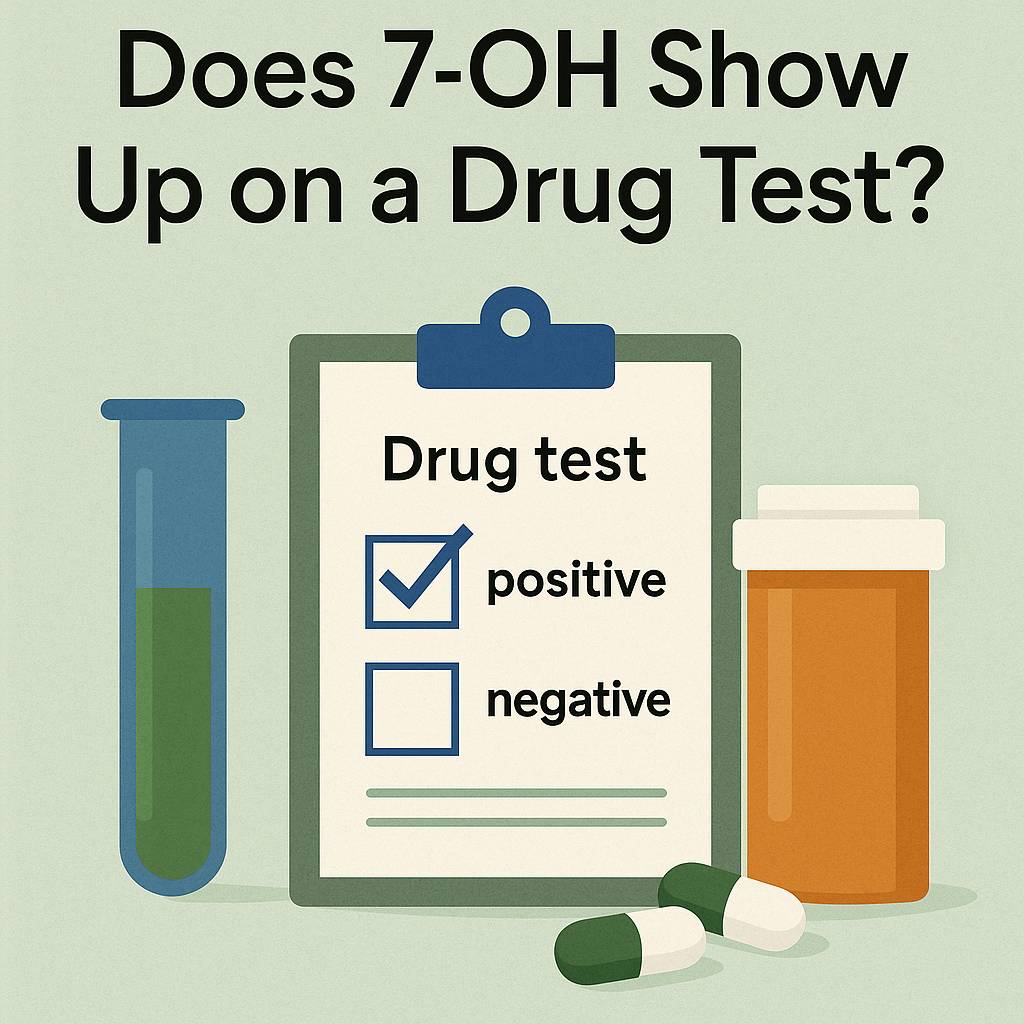
Does 7-OH Show Up on a Drug Test?
Share
Drug testing is a common concern for anyone using alkaloids like 7-hydroxymitragynine (7-OH), a potent compound associated with kratom. Whether you are worried about employment screening, legal compliance, or simply want to understand how long 7-OH may linger in your body, the answers are not always straightforward. Standard tests rarely look for 7-OH directly, but targeted tests and cross-reactivity on opioid panels are possible.
At King Pen Vapes, we focus on giving clear information so you can make informed decisions when buying 7-OH. This guide explains what typical drug tests look for, how detection works for 7-OH, how long it may stay in your system, and practical risks to consider.
TL;DR
- Standard workplace panels do not typically screen for 7-hydroxymitragynine.
- Specialized tests can detect kratom alkaloids, including 7-OH, if specifically ordered.
- 7-Hydroxy may contribute to a false positive on some opioid immunoassays until confirmatory testing is done.
- Detection time depends on dose, frequency, metabolism, and test type.
- Urine can detect use for several days; hair testing can show exposure for weeks to months.
- There is no guaranteed way to pass a drug test if you use 7-OH.
Does 7-Hydroxymitragynine Show on a Drug Test?
7-oh does not appear on most standard 5-panel or 10-panel drug tests. These panels usually screen for THC, cocaine, opiates, amphetamines, and PCP. However, laboratory methods like GC/MS (gas chromatography mass spectrometry) or LC/MS (liquid chromatography mass spectrometry) can detect kratom alkaloids, including 7-OH, if a test is specifically requested to look for them. Some employers or programs use extended screens that include kratom.
Can 7-OH Cause a False Positive?
Yes. 7-hydroxymitragynine can contribute to a false positive on some opioid immunoassay screens. Because 7-OH interacts with mu-opioid receptors, certain assays may register it as an opiate. Confirmatory testing with GC/MS or LC/MS typically resolves this.
How Long Does 7-OH Stay in Your System?
7-hydroxymitragynine can remain detectable from a couple of days up to a week or more depending on dose, frequency of use, individual metabolism, hydration, and liver function. Occasional users often clear in 2 to 5 days; heavier or chronic use may extend that window.
Estimated Detection Windows by Test Type
| Test Type | Typical Detection Window | Notes |
|---|---|---|
| Urine | 2 to 7 days | Most common modality; extended panels can include kratom alkaloids |
| Blood | Up to 24 hours | Short window; less common for employment screening |
| Saliva | 1 to 3 days | Limited use; may detect recent exposure |
| Hair follicle | Up to 90 days | Reflects historical use; rarely ordered specifically for 7-OH |
Does 7-OH Show on a Standard Urine Drug Test?
No. Standard urine panels usually do not include 7-hydroxymitragynine. If a lab is asked to screen for kratom, an extended panel can detect mitragynine and 7-OH using confirmatory instrumentation.
How Does 7-OH Compare to Kratom in Drug Testing?
Both mitragynine and 7-OH can be detected when a test is designed to look for kratom alkaloids. 7-OH is present at lower natural levels but is more potent; mitragynine is more abundant and is often the primary target on extended panels.
Kratom Alkaloids in Testing
| Compound | Relative Abundance in Plant | Relative Potency | Detection Likelihood in Extended Tests |
|---|---|---|---|
| Mitragynine | Higher | Moderate | High |
| 7-hydroxymitragynine (7-OH) | Lower | High | High |
Can You Be Tested for 7-OH in Legal or Workplace Settings?
Yes. Some organizations and safety-sensitive employers include kratom alkaloids in their banned substance lists. Military branches, treatment programs, certain healthcare employers, and some athletic bodies may order extended screens that cover mitragynine and 7-OH.
How to Reduce the Risk of Testing Positive for 7-OH
The only certain way to avoid a positive result is not to use 7-OH. Timing strategies, dilution, or detox products are unreliable and can be flagged by modern labs. If testing is likely, abstaining and following all policies is the lowest-risk path.
FAQs
Does 7-hydroxymitragynine show up on a standard drug test?
No. Standard 5-panel and 10-panel tests typically do not include 7-OH unless an extended panel is requested.
Can 7-OH trigger a false positive for opiates?
Yes. Some immunoassays can cross-react. Confirmatory GC/MS or LC/MS resolves most false positives.
How long does 7-OH stay in urine?
Urine tests can detect use for roughly 2 to 7 days, depending on dose and individual factors.
Can hair tests detect 7-OH?
Yes. Hair testing can reflect exposure for up to 90 days, though it is less commonly ordered for 7-OH.
Is there a guaranteed way to pass a drug test if you use 7-OH?
No. There is no guaranteed method other than abstaining and following applicable policies.
